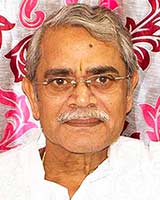Another form of infanticide was far more widely spread, especially among the Rajputs, Jats and Mewats in Central and Western India. Here, the difficulty of marrying girls led the parents to... Read more
Although the beginnings of English education on a sound basis are to be traced to the momentous decision of 1835, the evolution of a comprehensive and coordinated system of education had to... Read more
Government could not altogether ignore the new spirit. At the time of the renewal of the Company’s Charter in 1813, Parliament asked the Company to take measures for the “... Read more
The Raja similarly drew up petitions against the Jury Act of 1827. The provisions of the Act and the grounds of the Raja’s objection thereto may be gathered from the following extract:... Read more
The New India and Raja Rammohan Roy IN SPITE of political convulsions and economic retrogression the first century of British rule in India (1757-1858) is in certain respects a memorable epo... Read more
The story is current in Bengal that, in order to avoid being forced to weave for the Company, many weavers used to cut off their own thumbs. This story is perhaps merely a popular invention,... Read more
ONE of the most important facts in the history of India during the first century of British rule is the decay of her flourishing trade and industry. In order to understand properly the exten... Read more
Supreme Courts Reference has already been made to the establishment of a Supreme Court in Calcutta, and its early history. In 1797 the number of judges was reduced to three. A Supreme Court,... Read more
Madras In Madras, as in Bengal, the chief administrative problem was the collection of land-revenue, which was the main source of the income of the State. Unlike Bengal, however, the British... Read more
Bengal, the Second Phase (1793-1828) For a period of thirty-five years the system of Cornwallis was adopted as the guiding principle, and the Government were merely engaged in remedying the... Read more











